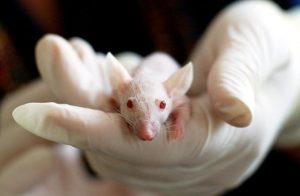
Representative image : Pixabay
Everyone understands the fear, anxiety and desperation that sets in a person suffering from cancer.
Nowadays it is very common to hear about a ‘ground-breaking breakthrough’ in cancer treatment, tempting the cancer patients to try out anything that offers a cure. What you don’t hear is that it can take years for a new treatment to reach the patients it’s intended to treat.
Cancer is one of the popular topics for the media and sometimes the pressure to deliver news can result in catchy headlines, inaccurate reporting and even over reporting. Sometimes even basic research in cancer ends up as front page news.
Google has millions of pages with topic ‘cancer’ and YouTube has many videos sharing cancer ‘cures’.
Fake products/ drugs offering cancer cure normally use these phrases.
- Treats any form of cancer
- Shrinks malignant tumors in days
- Selectively kills cancer cells and leaves healthy cells intact
- More effective than chemotherapy, no side effects.
- Miraculous cure
It is important to know that any legitimate drug or device must gain approval from a government regulatory authority like the FDA in the USA before it can be marketed for use. There are several illegally sold cancer treatments out in the market.
There can be studies that state that a new therapy or technology has promising results. Many studies on cancer and other incurable diseases take place across the world but even the most promising findings take a long time to get approved and make it to the pharmacy shelves. The chance for a new drug to actually make it to market is only 1 in 5,000 as it goes through rigorous testing.
It is good to know, how the clinical trials are carried out and by whom. The website ClinicalTrial.gov has many details including who is funding them.
When a new drug, device or procedure is developed it must be thoroughly tested and such studies involving human subjects or volunteers are called clinical trials.
Let us understand the Process of Clinical Trials:
Developing a drug is a very complex and long procedure. It can take roughly eight-and-half years for an experimental drug to reach the pharmacy.
In most countries the process of drug approval is controlled by a regulatory agency. For example, in the U.S.A. the Food and Drug Administration (FDA) governs this process.
There is a sequence of events before an experimental drug gets its approval.
Most experiments start out in the laboratories.
‘In vitro’ and ‘In Vivo’ trials.


Representative images
The term ‘in vitro’, in Latin means ‘within the glass’. It refers to an experiment that is done in a test tube or Petri dish.
But testing drug candidates in a test-tube does not mean it will work on humans. So the next step is ‘in vivo’.
‘In vivo’, in Latin means ‘In the living organism’: an experiment that is done in vivo is done in the body of a living organism such as human, animal, etc.
The drugs candidates are first tested in mice or rats, and sometimes on monkeys.
It is imperative that the laboratory and animal studies are completed to demonstrate the biological activity of the drug against the targeted disease before it is given to humans. These tests usually take about 3 years and only 5 in 5,000 drugs that enter preclinical testing advance to human testing.
A drug candidate is advanced to humans, after animal studies are completed, and an approval from FDA is taken.
Phases of clinical trails
Clinical trials of drugs are usually described based on their phase.The FDA typically requires Phase I, II, and III trials to be conducted to determine if the drug can be approved for use.
- A Phase I trial involves an experimental treatment on a small number of healthy volunteers (20 to 80) to detect any toxicities before more volunteers are put to risk. It is done to judge its safety and side effects and to find the correct drug dosage.
- A Phase II trial uses more people (50 to 500). Phase one focuses on safety and Phase II focuses on seeing if it’s effective on larger group of people. It also aims to obtain data on whether the drug works in people with a certain disease or condition. This study takes longer and can take several months and sometimes years.
- A Phase III trial – The goal of this trial is to gather more data about safety and effectiveness in different populations and identify the best dosage regimen. Several thousand volunteers are used for this study and it can take a couple of years for completion. Data from these studies is submitted to the FDA for approval of the drug. If the results are positive, FDA approves the drug.
- A Phase IV trial for drugs or devices is commenced after the FDA approves their use. The drug’s effectiveness and safety are monitored in large, diverse populations to determine its efficacy. Sometimes, the side effects of a drug kick in after several years of using the drug.
When you go through a clinical trial study make sure you go through the data properly. The data on the subjects overall survival, and percentage of false positives and negatives are important factors. Where the results are published also matters. It is important that the data is published in reputed bio-med journals and are peer reviewed where their findings are scrutinized by other scientists. Clinical trials may contain fake or falsified data too.
While clinical trial can be an option for those suffering from incurable cancer and other diseases it is important for patients to make a well-informed decision about participation. Such decisions are often guided by emotion without knowing the possible positive and negative effects of the process.
It is recommended to take expert advice from your doctor before opting for any cure you come across in the media or a website.
Sign up for the QuackTrack.org newsletter below!













